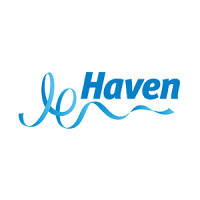Formula One on the Waves: Inside the Extreme Speeds of SailGP
Jimmy Spithill’s obsession with speed began in a little dinghy in Australia.
Before he built a career captaining the fastest sailboats in the world, winning two America’s Cup trophies in the process, the Australian-born sailor was puttering to and from school in a “tinny” powered by an outboard motor. Growing up in a national park north of Sydney, on Australia’s east coast, Spithill’s home was accessible only by boat. So every day, he was out on the water.

A young Jimmy Spithill windsurfing in Australia.
Courtesy of Jimmy Spithill
“It was a way of life,” says Spithill. “Like a surfer growing up on a pipeline, it was just there.”
Now based in California, Spithill is the captain of Team USA in SailGP — a grand-prix-style sailing competition that sees eight international teams racing around the globe using one of the world’s most advanced hydrofoil catamarans, the F50. Every part of the F50 is designed to maximize speed. Instead of a fabric sail, it has a rigid vertical wing with a modular design that can be sized up and down depending on wind conditions.
The twin hulls, made from lightweight carbon fiber, are long and narrow — just wide enough to hold the crew members. And underneath the sailboat, four razor-sharp hydrofoils slice through the water and generate lift to push the boat out of the waves.
I’m out on the San Francisco Bay watching the eight SailGP teams, including Team USA, prepare for the Grand Final of the season. In the choppy water near the Golden Gate on a typical spring day (biting wind, bursts of sunshine interspersed with San Francisco’s famous fog), the boats are tacking and maneuvering in their final practice race.
Jimmy Spithill now captains Team USA in SailGP.
Thomas Lovelock for SailGP
I knew these were some of the fastest sailboats in the world, but seeing them speed past each other feels like being down on the barriers at an F1 racetrack.
There’s no sound of motors — just the futuristic whirr of hydrofoils cutting through the water at speeds of more than 50 miles an hour. Thanks to the hydrofoils, these boats are literally flying by. “It’s honestly like getting in a Formula One car,” said Spithill. “When you think about the speeds — there’s no seat belts, there’s no airbags.
You’ve got carbon fiber missiles launching around the track on the edge of control.”
From F1 to F50
As another kid who grew up in Australia (albeit a long way from the beach), I remember the folklore around Australia’s America’s Cup win in 1983. As Aussies, we all know the story of the controversial “winged keel” on the winning Australia II racing yacht. It was our secret weapon.
It helped us beat the Americans. It’s the reason our prime minister gave us all the day off to get on the beers. But in SailGP, none of the eight countries competing for the £1 million prize money gets a secret weapon.
They all race in exactly the same boat. According to Spithill that evens the playing field, taking away the technical advantages that could come from one country working with better hardware. “It really does come down to the best team out on the water,” he says. “And that in itself also produces great racing.”
According to SailGP, the F50 takes its design cues from the AC50 catamarans that were used in the 2017 America’s Cup, but with improvements to the hydrofoil design that reduce resistance and increase the speed of the boat.
Japan and Spain push their F50s to the limit during a race in Cadiz, Spain, earlier in the SailGP season.
Felix Diemer for SailGP
The physics behind hydrofoiling are essentially the same as the physics of flying. Water flows above and below the foil in the same way that air flows above and below an airplane wing, creating a pressure difference that generates lift, ultimately pushing the foil up and out the water. There are four hydrofoils on the F50 — two T-shaped rudders at the back and two curved foils at the front, known as daggerboards.
In the Team USA tent before the final practice race, I watch as the daggerboards are installed underneath the hull like a new set of fangs. The daggerboard name is no joke — a crew member tells me about the time he absentmindedly walked backward into a foil and sliced his leg. Managing the physics of those hydrofoils during a race is a finely tuned art.
The F50 “flight controller” manages the angle of the foils to control how high the boat flies out of the water. Too low, and the boat doesn’t hit those fast hydrofoil speeds. Too high and it can become unstable and crash.
Jimmy Spithill and Team USA face the waves during the practice race before the SailGP grand final in San Francisco.
Ricardo Pinto for SailGP
But it’s not just about managing the height of the boat in the water.
Two “grinders” at the front provide the power to move the wing, another crew member controls the angle and direction of the wing, and a strategist at the back of the boat takes in the whole course, keeping the boat inside the boundaries. Then there’s the “driver” — Spithill’s role — who controls the direction of the boat and keeps all these crew members working in unison. And if that wasn’t enough, when the F50 maneuvers and tacks into the wind, the crew needs to run across to the second hull on the other side of the boat and do everything from the opposite side.
“Swapping sides is probably one of the most challenging things on the boat when you’re going at high speeds,” says Spithill. “The only way I could describe it would be honestly getting on the roof of a car blindfolded and someone driving a rally course.”
Team USA captain Jimmy Spithill.
Celso Bulgatti/CNET
Crew members are attached to the boat with mountain climbing harnesses, and they have access to spare air in case of a capsize. They wear impact vests and helmets, and Spithill communicates with all of them by way headsets, so they can hear their instructions above the wind. “We’re doing 60, 65 miles an hour — if you’re in 30-mile-an-hour winds, you feel 90-mile-an-hour winds, so you’re in a big hurricane,” he says. “If water hits you at 90 miles an hour, you feel it.”
Spithill is sitting in the Team USA boat, this time on dry land, telling me what it takes to sail at those speeds. He shows me the braille-like bumps on the F50’s electronic controls that let the crew press buttons without taking their eyes off the water for a second. He tells me about the chipped teeth and broken noses his crew have received during capsizes.
As he grips the wheel of the boat, I see a bad cut on his finger and a fresh set of painful-looking stitches. He barely seems to notice. Turns out this isn’t the blazer-clad sailing I was expecting.
The US and Spanish teams collided during the second day of Grand Final racing.
Simon Bruty for SailGP
Deep diving into the data
The technology that sets the F50 apart doesn’t stop at the rigid wing or the hydrofoils.
There are roughly 1,000 sensors built into this boat, bringing in more than 30,000 data points on every element of the race — everything from the angle of the wing to the load on the hydrofoils, even down to how many times a button has been pressed on the steering wheel. In an afternoon of racing out on the San Francisco Bay, the eight boats will generate 40 billion data requests. All that data is fed back to an Oracle data center in London.
That team in London also controls one of the two cameras built onto each boat, which can be moved in real time to capture the best angles of the race. This data isn’t just about giving the crew an accurate picture of where they are in the race at any given moment. It’s also used by the teams after the race to study how the boat and the crew performed over every single part of the racecourse.
But unlike prestige races like Formula One, the SailGP teams don’t keep this data to themselves. “All the teams have access to each other’s data,” says SailGP’s chief technology officer, Warren Jones. “So Team USA can see the data of the Australian team, and the Australian team can see the data of the British team.” Thanks to this “open data policy” the teams in SailGP aren’t just comparing their sailing to past performance.
They can drill down into the data of all their competitors to see how they managed the same course and conditions. This, combined with the fact that everyone is sailing on the same F50, means human skill is the biggest differentiator in every race. “When everybody gets on the racecourse, no one’s got a faster engine, everybody’s looking for the wind,” says Jones. “And therefore it’s all about the athletes, rather than the machines.”
For these athletes, the chance to sail at spots around the globe, in some of the world’s most picturesque harbors, and compete for SailGP’s million dollar prize money is an obvious draw.
But watching these sailors gear up for the race and head out onto the water, it’s clear this sport is about more than just prestige. For Spithill, it all comes back to the thrill of being on the water and hitting breathtaking speeds. “You can’t go back,” he tells me. “Once you get a taste for it, you’re always hungry for it.
And every time you go foiling and you hit those top speeds, you just want to wake up the next day and go for more.
“It’s a long way from the tinny in Sydney.”





